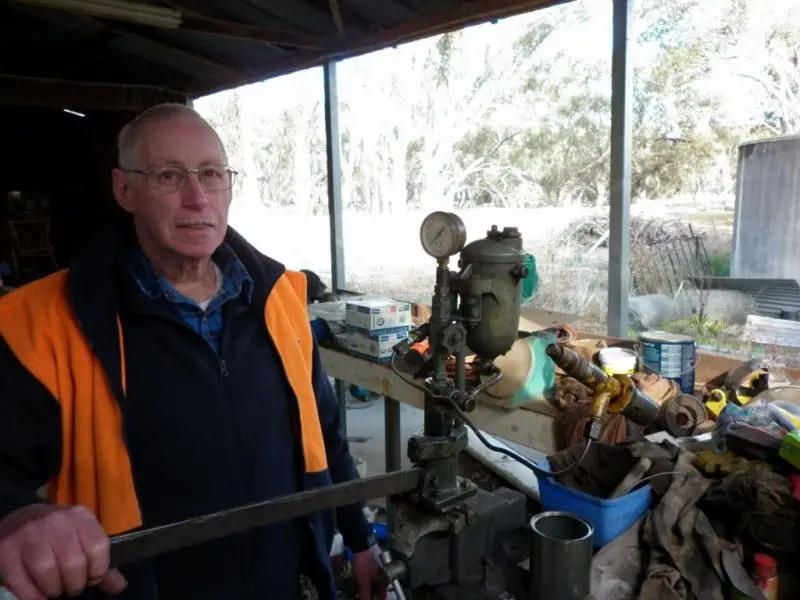
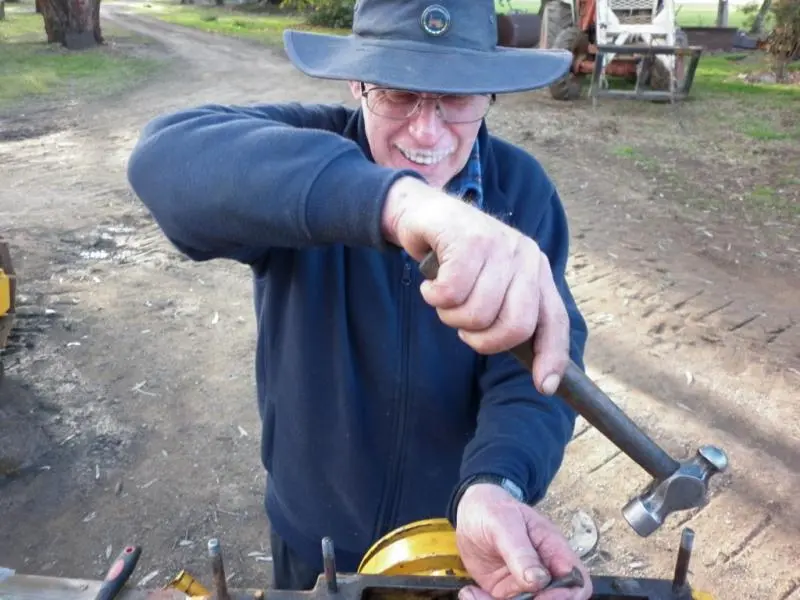
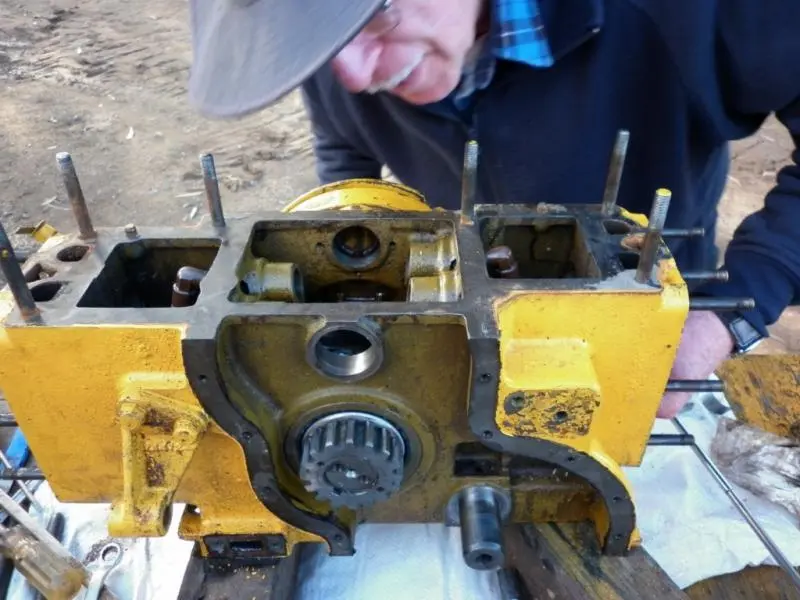
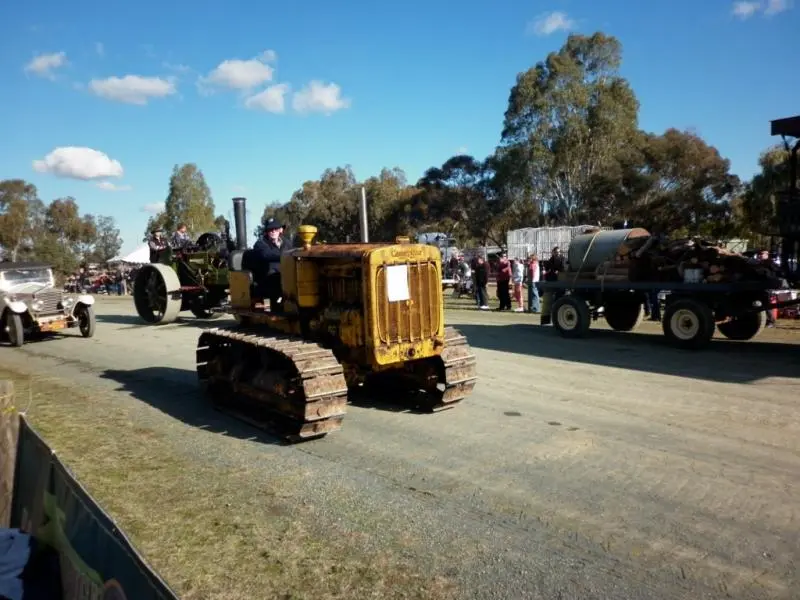
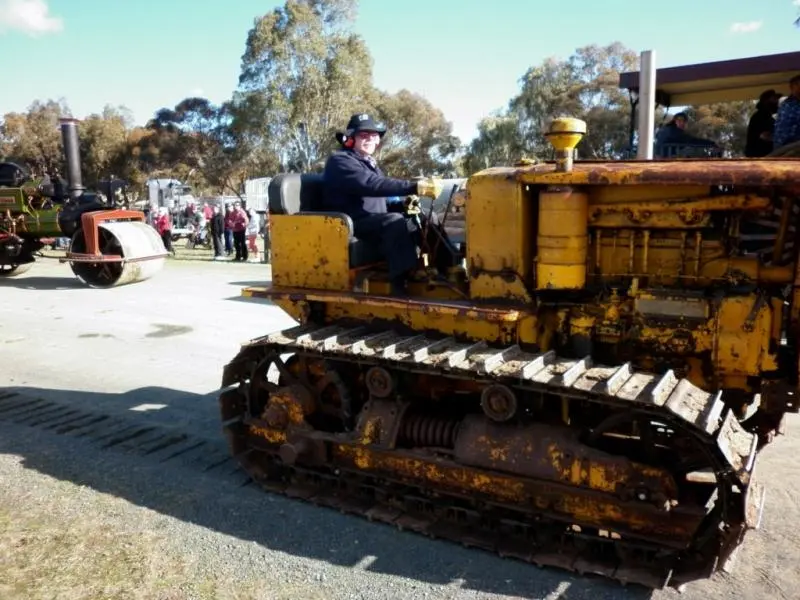
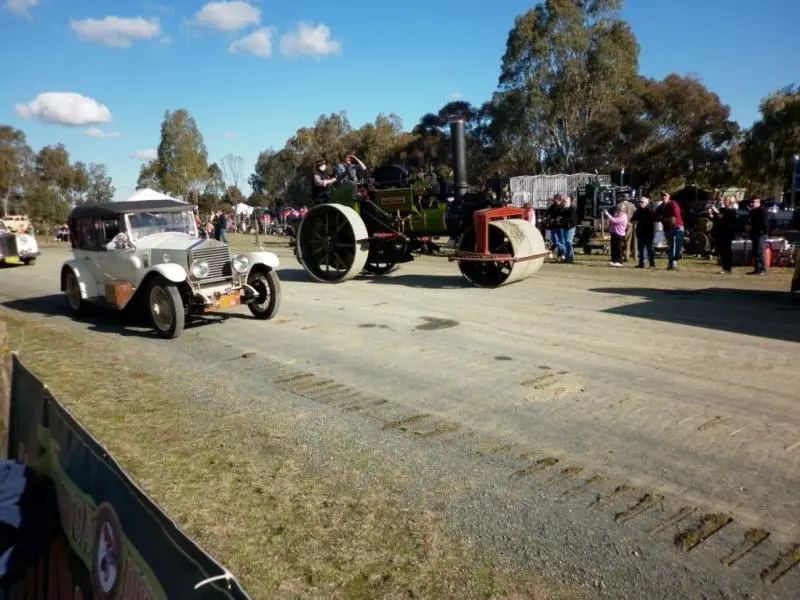
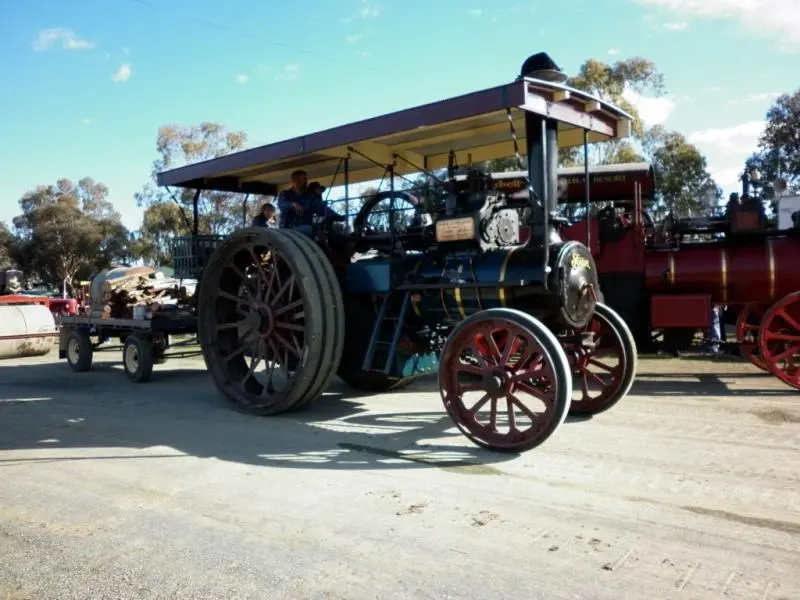
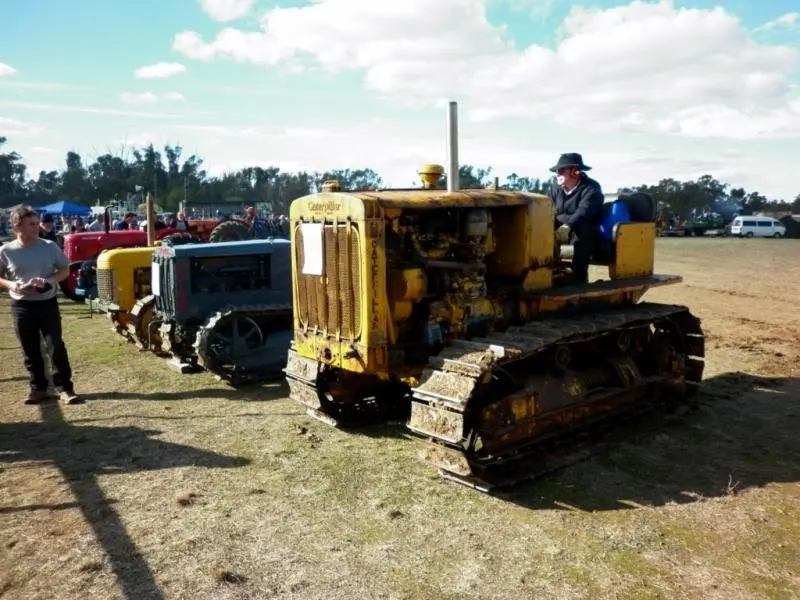
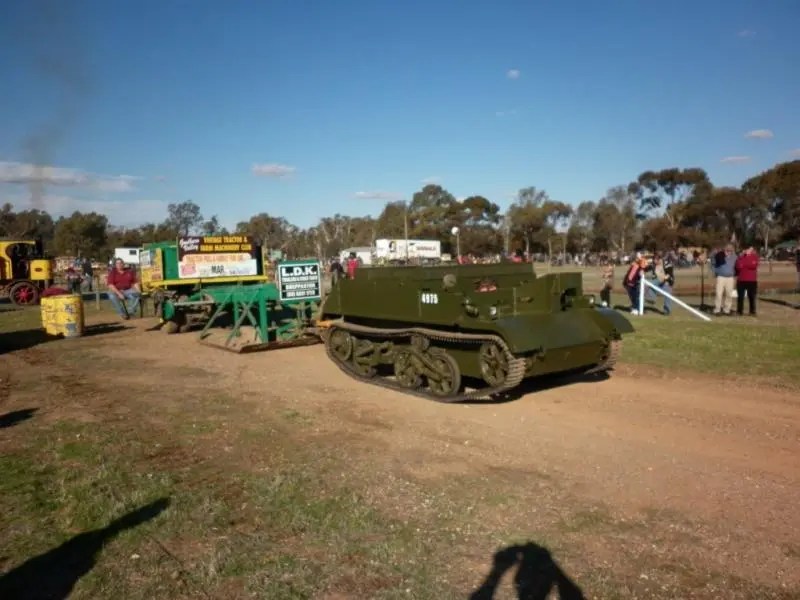
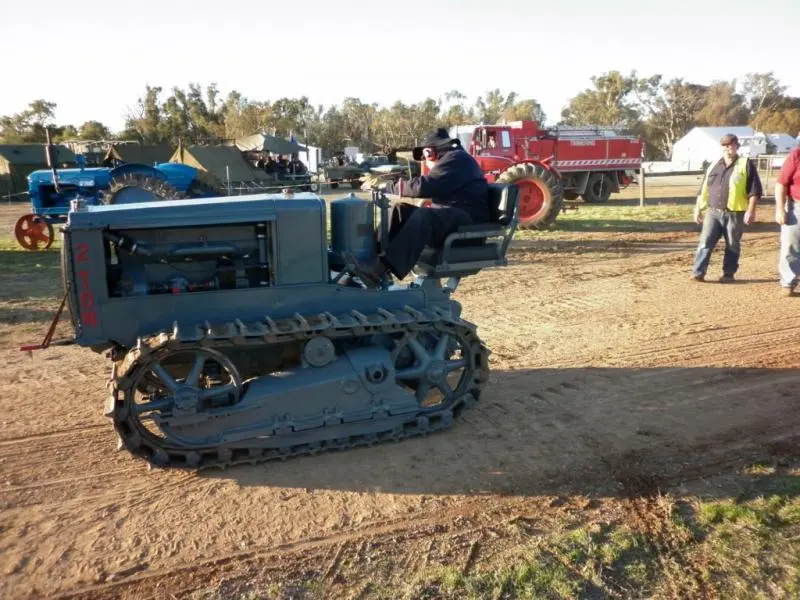
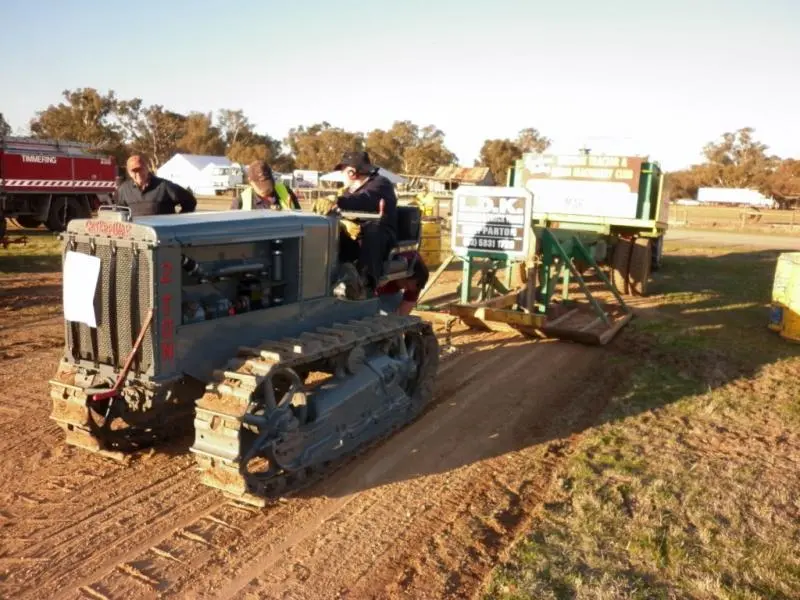
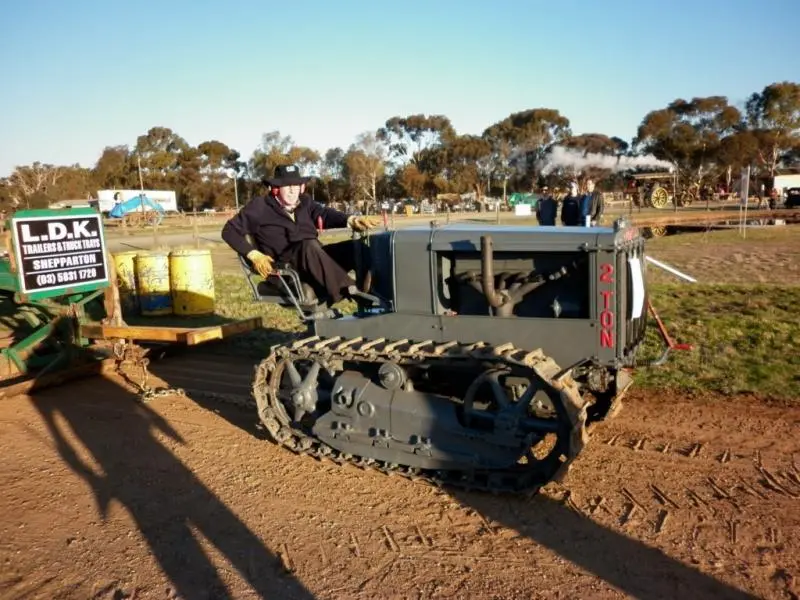
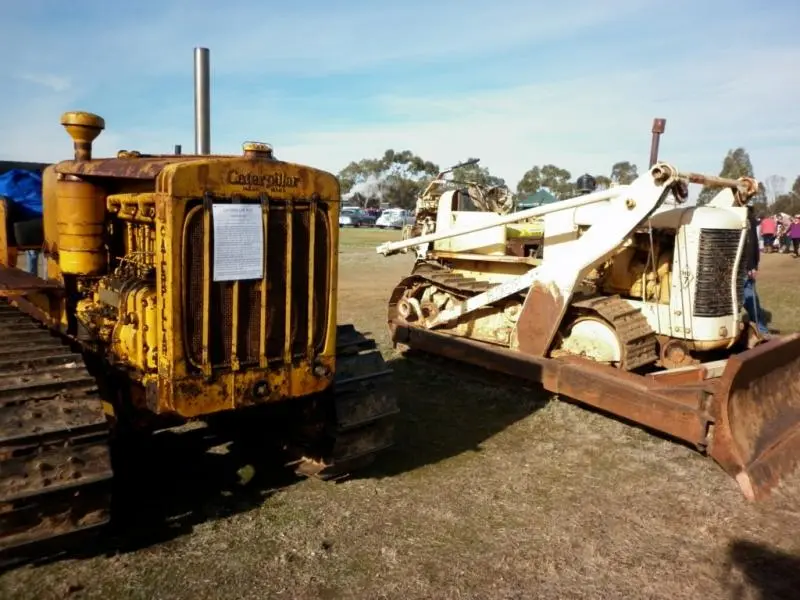
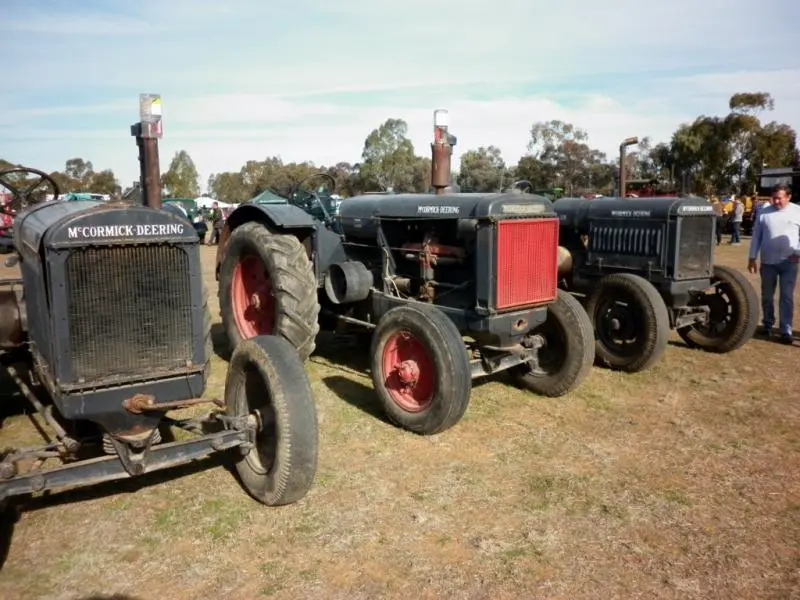
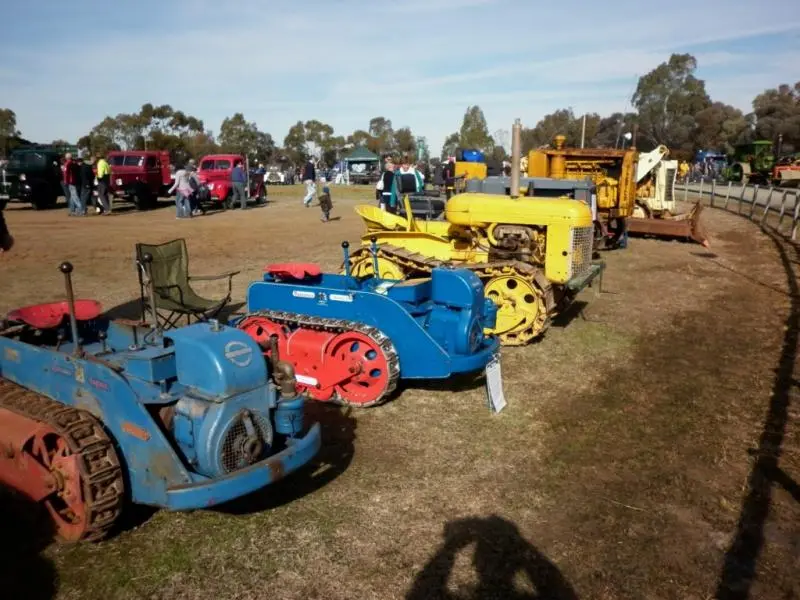
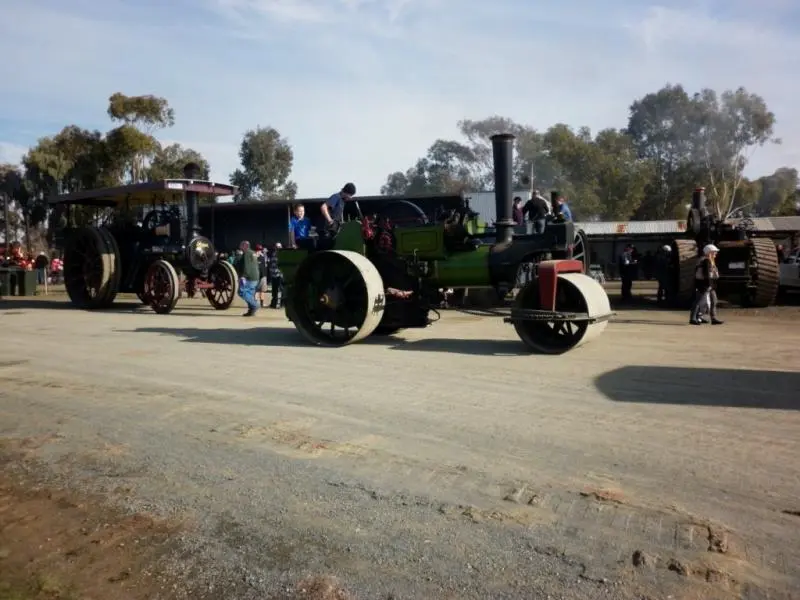
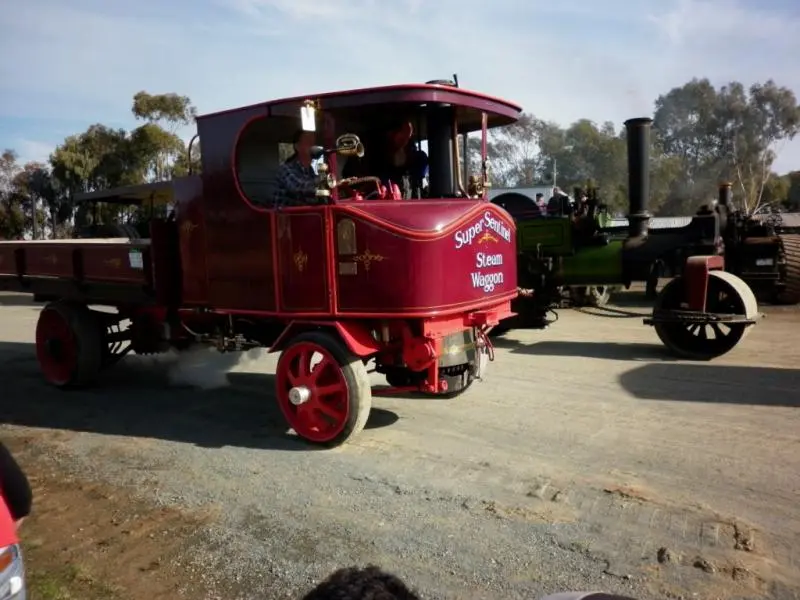
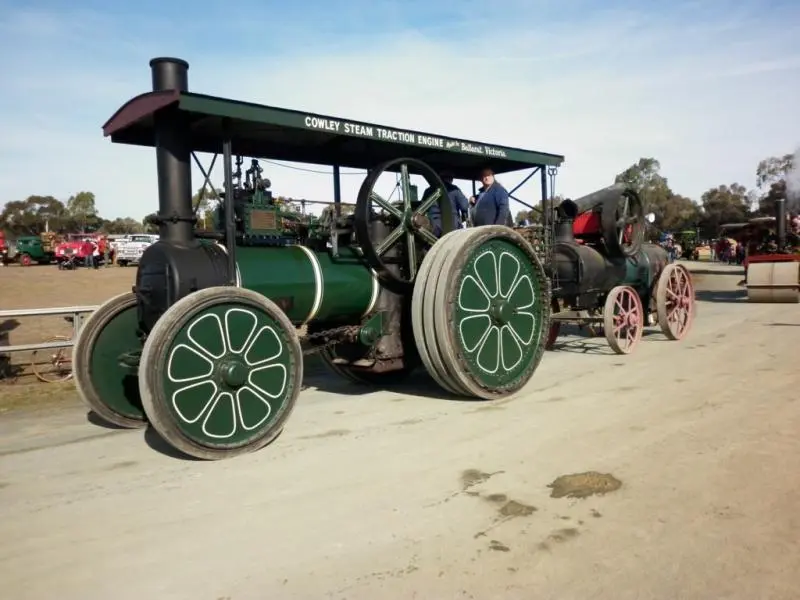
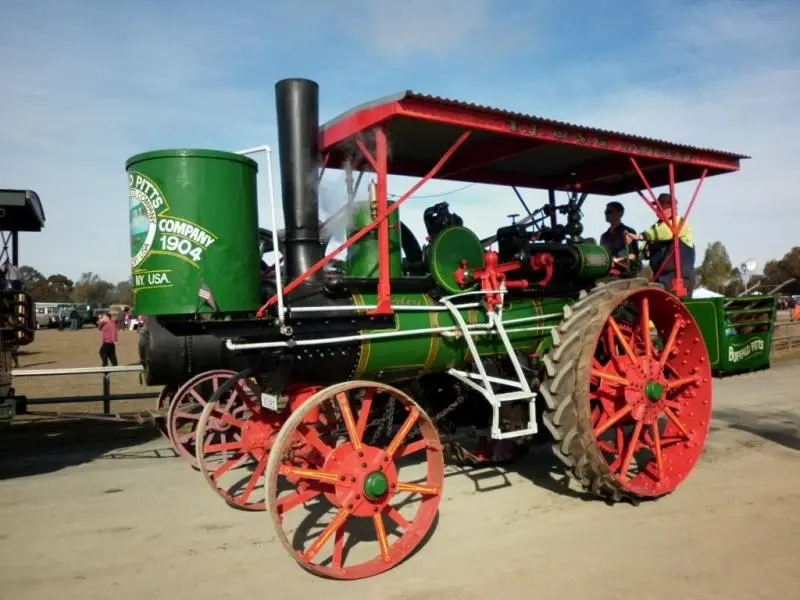
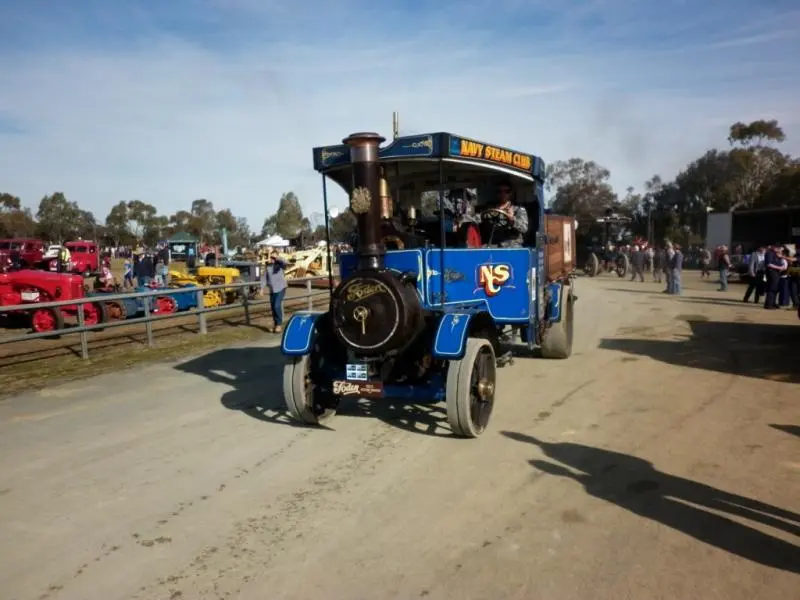
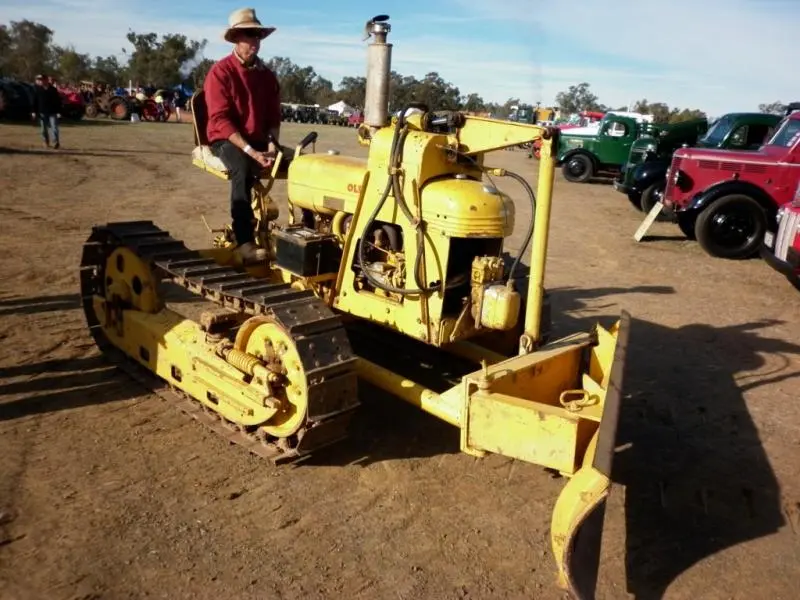
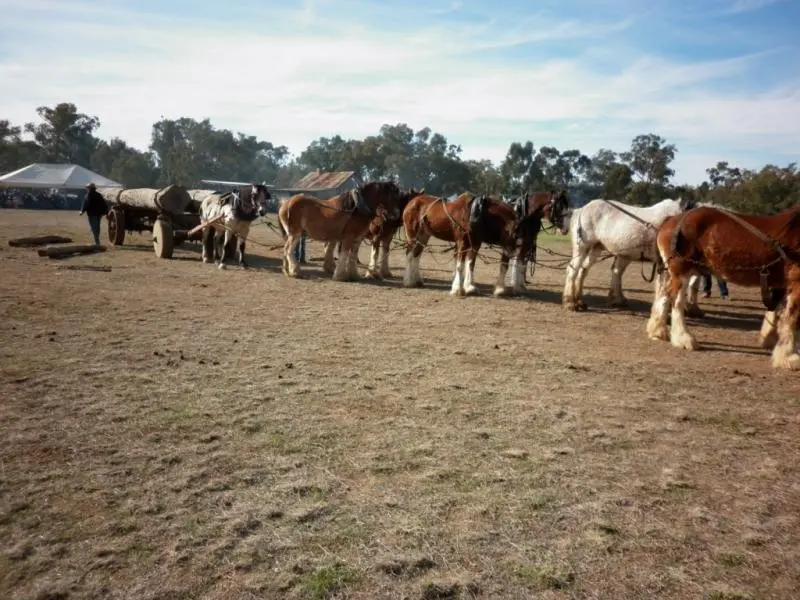
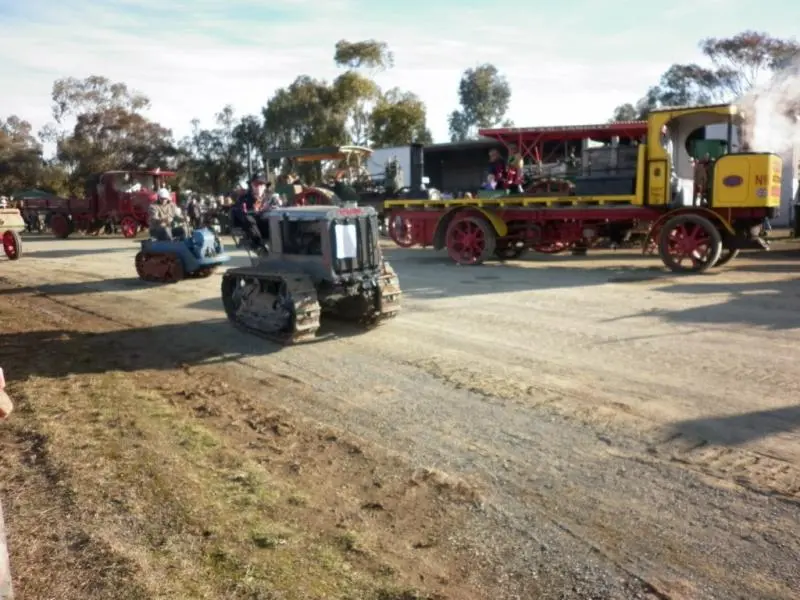
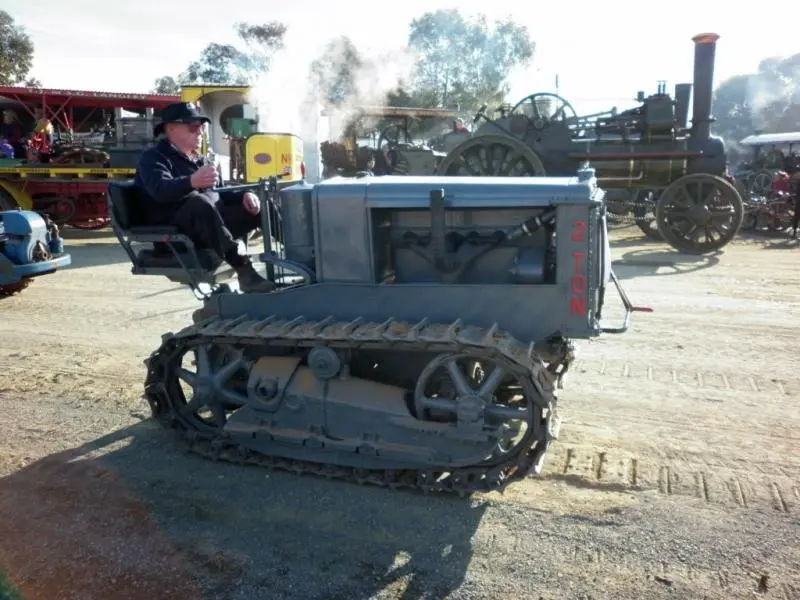
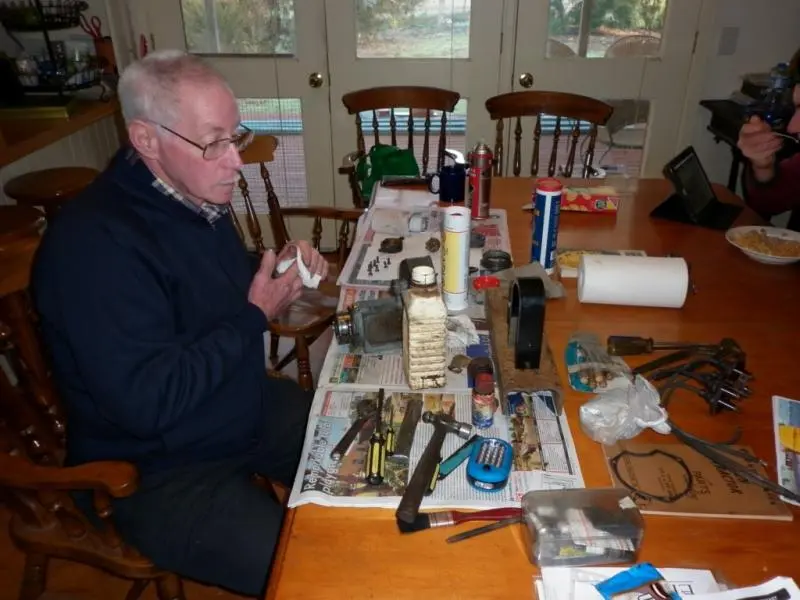
Great article Mike, very intesting indeed.
I hope one day, perhaps next year if the Gods allow, to visit some of the various steam rallys on the Mainland and to view those magnificent machines in the flesh - with preference to Caterpillars of course!
Thanks again.
G'day Mike. Like your pictures, A lot of steam vehicles of various shape and sizes and very well restored, those large traction engines must weigh a bit. How do you get approval for the heated workshop in the last photo, you must be on the best behavior.
Kevin
[quote="D349"]G'day Mike. Like your pictures, A lot of steam vehicles of various shape and sizes and very well restored, those large traction engines must weigh a bit. How do you get approval for the heated workshop in the last photo, you must be on the best behavior.
Kevin[/quote]
Hi Kevin, I usually wait till "Anna the Saint" has left ranch headquarters and is at least 10 miles down the road before converting the kitchen table to a workshop!
Mike
Hi Team,
a great big THANKS goes out to Mike for making his machines and exceptional hospitality available for the Rally week end--I was in residence for 5 days-4 nights, so as to attend this Rally.
We were blessed with exceptional weather for this winter time event, along with frosty nights and mornings.
Sad to say Mikes expensive and newly repaired magneto was sadly lacking in consistent sparking ability due to the rotor poling out caused by loose bearing adjustment. Also the cam ring pot metal housing was badly cracked--deteriorating-- and distorted causing inconsistent points gap.
We duly setup in the warmth of the indoor workshop in the late arvo and proceeded to re-overhaul the unit--alas we got caught out by Anna when she returned from her own weekend away with the girls.
The newly restored magneto then performed as expected.
We also got to remove, dismantle and failure analyse the many times overhauled pony engine from the RD4.
We found that the drive gear side main bearing had been machined to an incorrect oversize and caused the crank to work back and forth on an angle thus cross loading the opposite main and both con-rod bearings.
The con-rod bearings had seized due to the extreme pressures incurred by the cross loading and, had started to pound out the steel back of the shells, this metal had built up in the flywheel side main bearing and was embedded in the soft aluminium bearing material part scoring that main journal.
The camshaft had seized previously on this engine and this was evident by the adhesive build-up of the crankcase iron on the gear side cam journal--cam runs straight in the cyl. block without any bearings.
This area was almost devoid of any oil residue despite there being correct oil levels evident--suspect problem with multi-viscosity oil being used that had been overheated by the failing bearings and had thinned out to its base viscosity of 20 wt. in the 20-40 wt. oil package.
If these multi grade oils get overheated they revert to the base viscosity due to the multi viscosity additives being damaged by heat. This often occurs in air cooled engines as the oil can run hotter than the multi viscosity package's safe working range.
Water was also evident in the No 2cyl. coming in via the inlet valve, possibly from the gasket joint, but the top cover inlet passages need to be checked for cracks, porosity, etc.
This No 2 cyl. was rust pitted indicating that the water ingress has been occurring for some time and in previous lives.
Mike, thanks again for your generosity and friendship.
I had a blast operating both machines and the injectors I had tested a few weeks ago sure worked well in the RD6 as it had an even beat, with clear exhaust and easy starting from cold.
Cheers,
Eddie Bedwell.
Great Photos Mike .Looks like you found out first hand the pleasure seeing these old machines bring to people .
Hi Team,
a great big THANKS goes out to Mike for making his machines and exceptional hospitality available for the Rally week end--I was in residence for 5 days-4 nights, so as to attend this Rally.
We were blessed with exceptional weather for this winter time event, along with frosty nights and mornings.
Sad to say Mikes expensive and newly repaired magneto was sadly lacking in consistent sparking ability due to the rotor poling out caused by loose bearing adjustment. Also the cam ring pot metal housing was badly cracked--deteriorating-- and distorted causing inconsistent points gap.
We duly setup in the warmth of the indoor workshop in the late arvo and proceeded to re-overhaul the unit--alas we got caught out by Anna when she returned from her own weekend away with the girls.
The newly restored magneto then performed as expected.
We also got to remove, dismantle and failure analyse the many times overhauled pony engine from the RD4.
We found that the drive gear side main bearing had been machined to an incorrect oversize and caused the crank to work back and forth on an angle thus cross loading the opposite main and both con-rod bearings.
The con-rod bearings had seized due to the extreme pressures incurred by the cross loading and, had started to pound out the steel back of the shells, this metal had built up in the flywheel side main bearing and was embedded in the soft aluminium bearing material part scoring that main journal.
The camshaft had seized previously on this engine and this was evident by the adhesive build-up of the crankcase iron on the gear side cam journal--cam runs straight in the cyl. block without any bearings.
This area was almost devoid of any oil residue despite there being correct oil levels evident--suspect problem with multi-viscosity oil being used that had been overheated by the failing bearings and had thinned out to its base viscosity of 20 wt. in the 20-40 wt. oil package.
If these multi grade oils get overheated they revert to the base viscosity due to the multi viscosity additives being damaged by heat. This often occurs in air cooled engines as the oil can run hotter than the multi viscosity package's safe working range.
Water was also evident in the No 2cyl. coming in via the inlet valve, possibly from the gasket joint, but the top cover inlet passages need to be checked for cracks, porosity, etc.
This No 2 cyl. was rust pitted indicating that the water ingress has been occurring for some time and in previous lives.
Mike, thanks again for your generosity and friendship.
I had a blast operating both machines and the injectors I had tested a few weeks ago sure worked well in the RD6 as it had an even beat, with clear exhaust and easy starting from cold.
Cheers,
Eddie Bedwell.
Nice write-up Mike - interesting blade lift arrangement on that Oliver - of local manufacture is it?
Eddie, Mike's a lucky man having direct access to your experience! By the way,I have some end float in my Amer. Bosch MJK 4/2 armature shaft, the cam gear end of that shaft is bent so the cog moves "around" the circle, and the little distributor shaft has probably 20 thou of radial float - other than the bent shaft, I'm guessing that I just need new bearings or would you happen to know if adjustment is available? It does still throw a decent spark so I guess technically it's usable but.... (that "but" is why I always overspend on these small projects...).
Also by the way, I just picked up some parts from the Milton Cat dropbox - new spark plugs, spark plug wires, etc - still amazes me that I can buy brand new parts for my 60+ year old machine.
Cheers,
Neil
Mike--you being top dog with that RD6 on the sled pull I certainly hope they gave you that 18 gallon keg of beer! 😆
Hi Neil,
the end float can be adjusted by fitting shims behind the distributer end inner race.
Be very careful removing the race as it is close to the distributer plate pickup ring shield on the old Eisemann mags.--ask Mike how easy they are to break a chunk out of if you operate the screw drivers, we pressed into service to lever the race off, in the wrong direction.
Epoxy glue fixed the Bakelite shield A1.
I used a fibre washer, suitably thinned, along with his finger tip, to the needed thickness by Mike on a piece of wet or dry emery paper, that I just happened to have in my tool box, to shim out the race. Eisemann used steel shims but fibre is easy to work and as the bearing is fairly tight stands up OK. If you go too thick with the shim a paper shim under the end plate is OK.
Takes less shim thickness than you think to take up the end float to give minimal to zero, with no preload, end float.
If I am looking at the correct Parts diagram for the Am Bosch mag it has shims behind the dist. end of the armature shaft. The dist. shaft has two bearings that may have seized and the dist. shaft wore from turning in them???
The bearing lube in these old mags dries out and wear takes place. The bearings should be available from bearing shops or auto elects.
Hope this helps.
Cheers,
Eddie B.